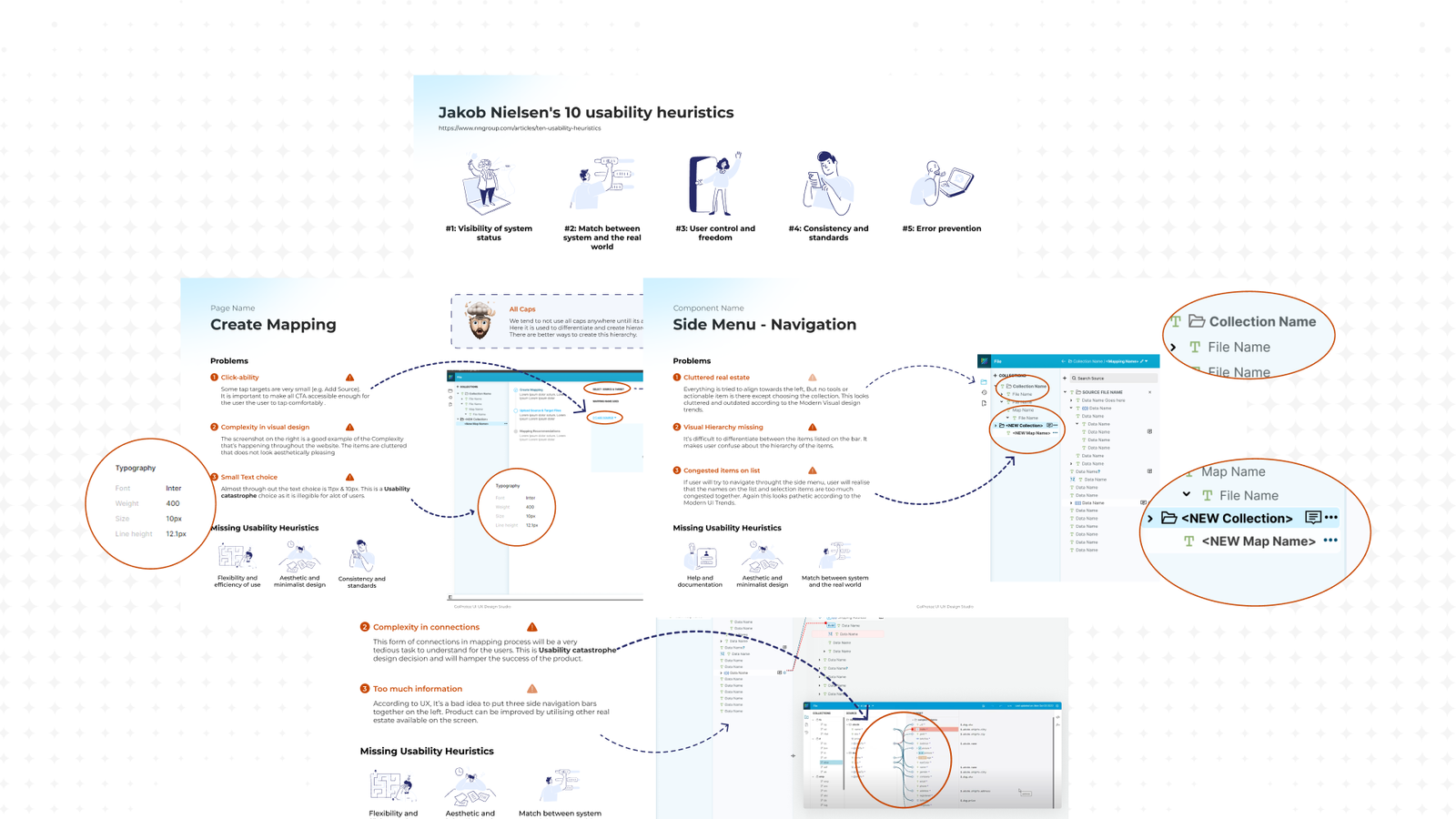In today’s digital-first world, user experience (UX) has become the cornerstone of business success. Whether it’s a website, web app, or mobile app, an intuitive and seamless UX can transform the way users perceive your brand and interact with your product. Yet, many businesses overlook the need to evaluate their UX through a UX audit, often resulting in lost opportunities, decreased engagement, and lower revenue.
This post explores why UX is critical for business success, how a UX audit can help identify and fix issues, and shares real-world examples of businesses that reaped significant benefits by improving their UX.

What Is a UX Audit?
A UX audit is a systematic evaluation of the user experience of a digital product—be it a website, app, or web platform. The goal is to identify usability issues, improve functionality, and ensure the product meets the needs of its users effectively.
What a UX Audit Covers:
- Ease of Navigation: Are users able to find what they need without frustration?
- Accessibility: Can users with different abilities interact with your product?
- Visual Design: Is the design consistent, engaging, and aligned with your brand?
- Content Clarity: Are messages clear, concise, and useful?
- Conversion Flows: Are users seamlessly guided toward taking desired actions?
Ignoring these aspects can result in missed revenue, higher bounce rates, and reduced customer retention. A UX audit ensures your digital product is optimized to deliver value to both users and your business.
Why UX Is Everything for Businesses
Whether you’re an e-commerce store, SaaS platform, or educational app, the user experience directly impacts your bottom line. Here’s why:
- A Great UX Increases Customer Satisfaction
- Improves Conversions
- Reduces Costs
- Strengthens Brand Perception
- Maximizes Revenue
Users are more likely to stay loyal to a platform that is easy to use and meets their needs.
Streamlining user journeys—whether it’s completing a purchase, signing up, or booking a service—ensures higher conversion rates.
A UX audit prevents costly redesigns or fixes by addressing issues early.
A well-designed product positions your brand as professional, innovative, and reliable.
Improving UX has a direct correlation with increased sales and engagement.
5 Signs Your Business Needs a UX Audit
- High Bounce Rates: If visitors leave your website without taking any action, UX issues might be the culprit.
- Low Conversion Rates: If users abandon your checkout process or don’t complete forms, your UX likely needs attention.
- Poor User Feedback: Complaints about navigation, performance, or usability signal a need for improvement.
- Mobile Optimization Issues: If your product isn’t optimized for mobile, you’re losing a massive audience segment.
- Stagnant Growth: A poor UX could be holding back your business from scaling.
How a UX Audit Benefits Your Business
A UX audit offers actionable insights to help you:
- Eliminate barriers that prevent users from achieving their goals.
- Streamline user flows to improve engagement and retention.
- Enhance accessibility to cater to a broader audience.
- Improve your product’s performance and usability.
Let’s look at real-world examples of businesses that benefited from prioritizing UX.
5 Examples of Companies That Achieved Success Through UX Improvements
1. Airbnb: Simplifying the Journey
Airbnb conducted a UX audit to tackle issues in their booking process. By simplifying navigation, adding intuitive search filters, and providing clearer communication during booking, Airbnb achieved a boost in user satisfaction and bookings.
Lesson: A smooth and transparent process reduces user frustration and drives conversions.
2. Walmart: Reducing Page Load Times
Walmart’s UX audit revealed that slow load times on their e-commerce platform were driving away customers. By optimizing their website for speed and improving navigation, Walmart saw a 2% increase in conversions for every second of improvement in load time.
Lesson: Speed and responsiveness are critical, especially in competitive markets like e-commerce.
3. Spotify: Enhancing Personalization
Spotify used insights from a UX audit to improve how users discover music. By introducing personalized playlists like “Discover Weekly” and enhancing the app’s navigation, Spotify boosted user retention and engagement rates.
Lesson: Personalization is key to keeping users engaged and coming back.
4. Duolingo: Adding Gamification
Duolingo’s UX audit revealed that users often stopped using the app after a few lessons. To address this, they introduced gamification features like streaks, badges, and progress tracking, which significantly improved user retention and course completion rates.
Lesson: Engaging features can motivate users to stay longer and achieve their goals.
5. Amazon: One-Click Ordering
Amazon’s relentless focus on UX led to the introduction of one-click ordering, drastically reducing the steps needed to complete a purchase. This innovation led to a substantial increase in customer satisfaction and repeat purchases.
Lesson: Simplifying user interactions is often the best way to boost conversions.
How to Conduct a UX Audit for Your Business
1. Analyze User Behavior
Use tools like Google Analytics or Hotjar to understand how users interact with your product and identify pain points.
2. Test Usability
Conduct usability tests with real users to uncover navigation issues, broken links, or unclear messaging.
3. Evaluate Accessibility
Ensure your product adheres to accessibility standards like WCAG (Web Content Accessibility Guidelines) to cater to all users.
4. Review Performance
Optimize loading speeds, mobile responsiveness, and overall functionality.
5. Seek Expert Help
Partner with a UX/UI design studio that specializes in conducting comprehensive audits and delivering actionable recommendations.
Why You Shouldn’t Ignore a UX Audit
Ignoring UX issues can lead to:
- Frustrated users who abandon your product.
- Lost revenue due to poor conversion rates.
- Negative reviews that damage your brand reputation.
Proactively investing in a UX audit is an investment in your business’s growth and sustainability.
How We Can Help
As UX/UI experts, we specialize in conducting in-depth UX audits tailored to your business needs. Our process involves:
- Comprehensive Analysis: We assess every aspect of your digital product, from navigation to performance.
- User-Centric Insights: We identify and prioritize changes that will have the most significant impact on user satisfaction.
- Actionable Recommendations: Our audits result in clear, data-driven suggestions to improve usability, engagement, and conversions.
Conclusion
UX is no longer a secondary concern—it’s a driving force behind business success. By prioritizing UX audits, you can transform your website, app, or platform into a user-friendly powerhouse that attracts, engages, and retains customers.
Don’t let poor UX hold your business back. Contact us today for a comprehensive UX audit and take the first step toward creating a seamless and successful user experience.






